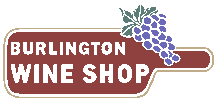Region: Italy - Piedmont - Barolo
Grapes: Nebbiolo
Alcohol: 14%
Notes on the Wine
Garnet ruby red in color with orange reflections. The bouquet is ample and embracing, with pronounced fruity notes of cherry and plum and notes of tobacco, liquorice and cocoa. On the palate, the wine is harmonious, pleasantly dry with soft tannins, broad and full-bodied. Persistent finish.
The 2018 vintage was characterized by a long winter with abundant snow and then rain in the spring, restoring the precious water reserve after 2017 experienced very little rainfall. May and early June required careful monitoring of grape health. The year continued with a hot and dry summer, and the abundant quantity of fruit required the elimination of excess bunches (thinning of 30-35%). An ideal climate in the last weeks of summer and then mild days and cool nights of September allowed for a gradual maturation and the development of elegant and complex aromas and flavors.
Notes on the Producer
Founded in 1890 as a direct result of a marriage between Giacomo Damilano and a Borgogno, Damilano is one of the oldest Barolo brands, specialising in classic Langhe reds such as Barolo, Dolcetto d’Alba, and Barbera d’Alba. Until the mid-1990s, Damilano was managed by three of Giacomo Damilano’s six sons, following in their father’s footsteps, but at the death of both Francesco and Giuseppe within a few months of each other, the reins passed to Sebastiano, the third brother, and to Giovanni, another brother who had not been involved to that point.
A turning point was reached in 1997, when the younger generations took over and involved more branches of the family; their declared goal was to restore to the brand its past luster, gaining more substantial market presence and higher quality wines. Their ace: the ownership of a 55-year-old section of the historical Cannubi cru, with south-southeast exposure, universally considered among the best there. The younger Damilanos brought with them important changes in wine style. The Barolo blend from various grape sources gave way to two different Barolos, one Cannubi, the other Liste (from a 35-year-old vineyard), the crus planted at 3,300 vines per hectare and trained in the Guyot system. The wines are vinified separately, with average-length macerations of about 12 days, and barriques replaced large botti, the new oak averaging about 40-50%.





